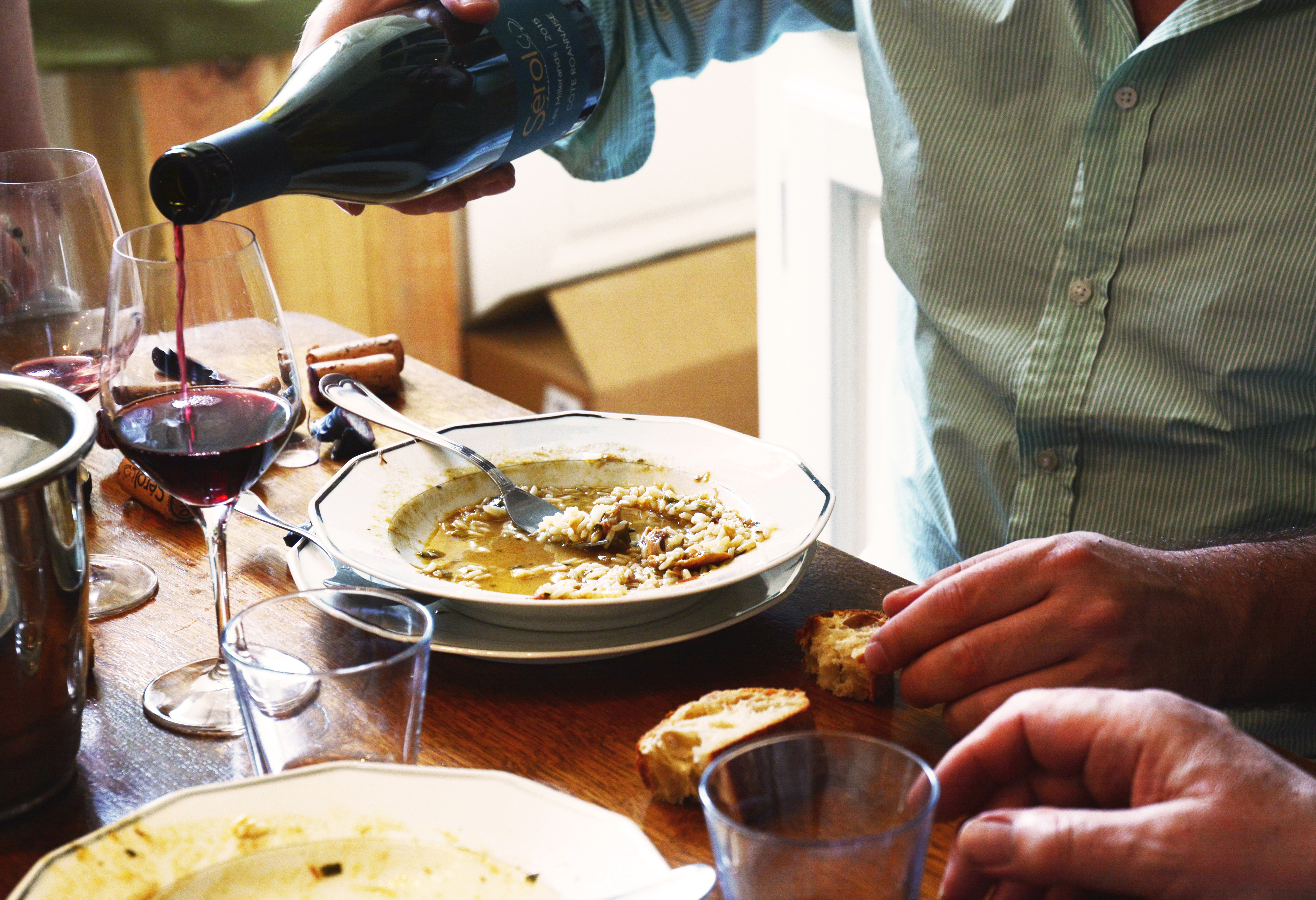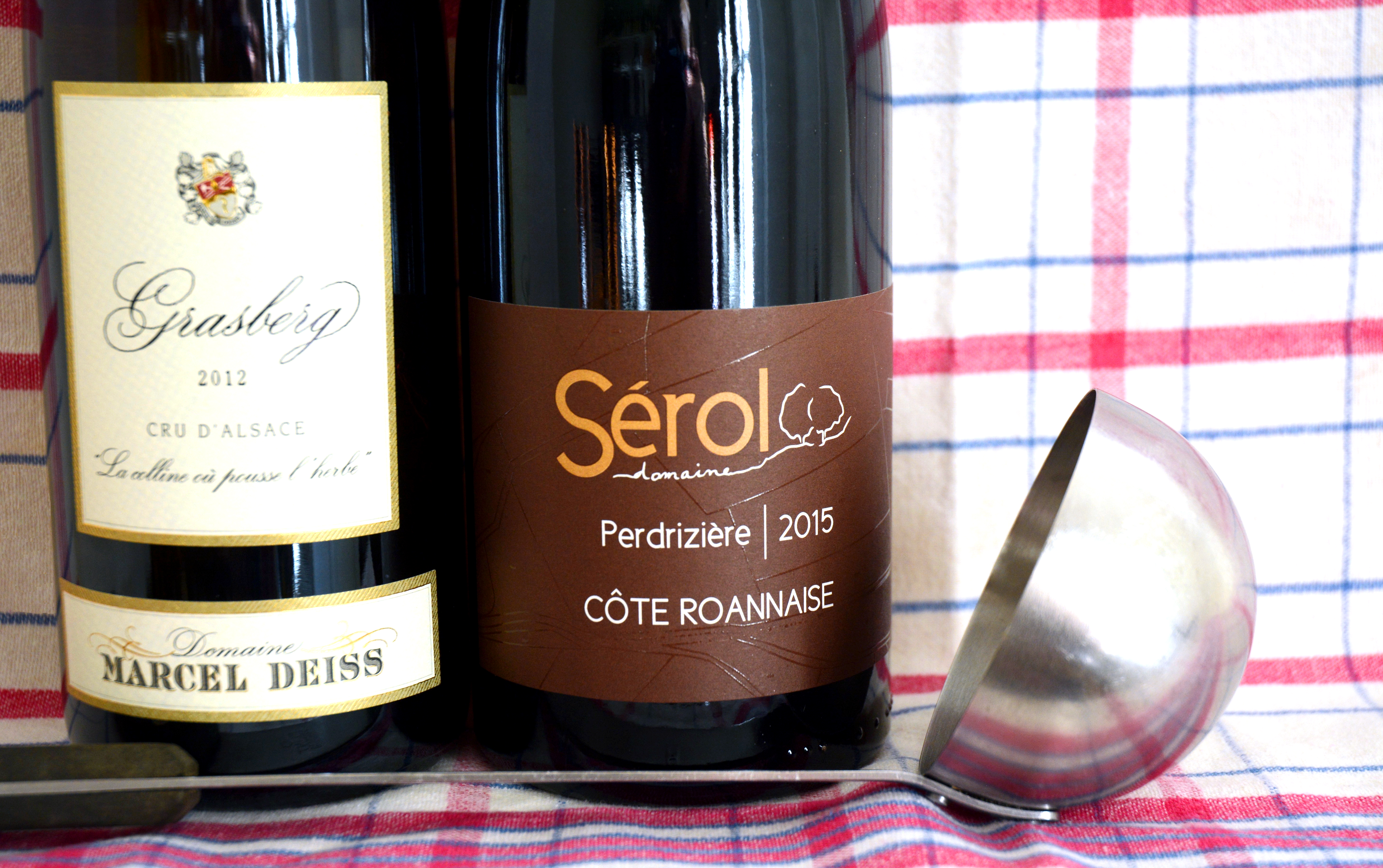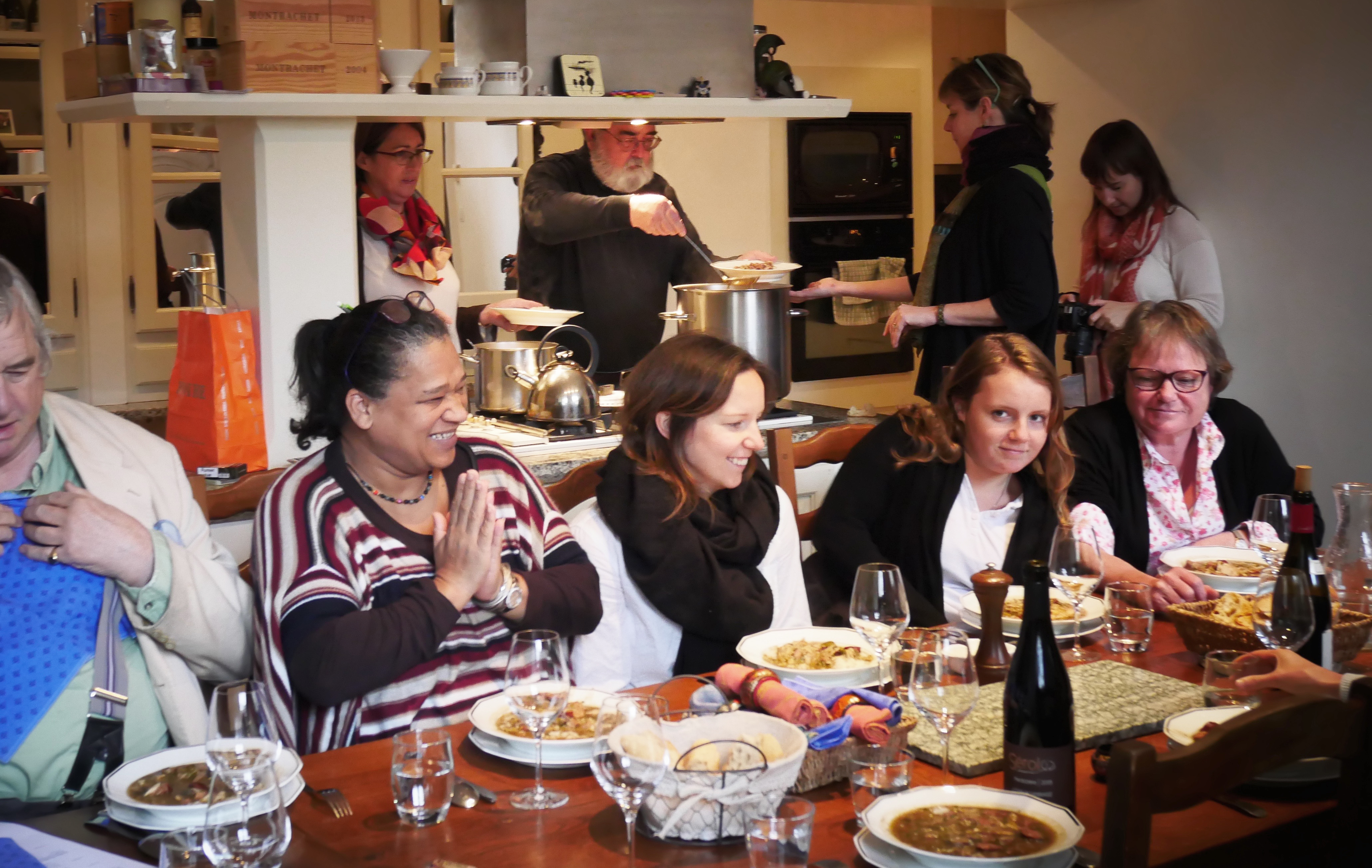- Recipes
- September 28, 2017
Dr. Blackwell Evan’s Gumbo
From the mid-eighties to the mid-nineties, Becky held yearly Burgundy tastings at Martin’s, the famed wine merchant in New Orleans. Rick Hopper was then the buyer for Martin’s, and Dr. Blackwell Evans was a close friend of his. Blackwell was not a wine geek per se, but he enjoyed food and wine. Since no harm would come from attending Becky’s tastings except financial, he did.
When Rick visited Burgundy for the first time, Blackwell came with him and did all the driving. Rick returned to Burgundy yearly, always with Blackwell, who always drove. This led Becky and Russell to believe for years that Rick couldn’t drive. He could. But he wanted the option of not having to spit at tastings.
One year, Rick had to cancel his visit. Blackwell came anyway. And when after changing jobs Rick stopped coming altogether, Blackwell continued to pay Becky and Russell a yearly visit. A few years ago, his visiting schedule was changed to twice yearly.
Despite his fiction-grade name, Blackwell is an actual doctor who practices internal medicine, and an Associate Professor of Medicine at the Tulane University Medical Center. All Wasserman-Hones aging rapidly, he is happy to offer a second opinion on an ever increasing list of ailments. Generally, this means cocking his head forward, peering sternly over his glasses, and informing the patients without hoping for manifest progress that what they really need to do is change their lifestyles.
There are four more reasons why Blackwell is always welcome at the house: he does not care to geek out on wine; he doesn’t go tasting all that much anymore, and requires no appointments to be made for him; he is extremely low maintenance; if he disapproves of us, he doesn’t show it. Blackwell just brings the collected works of an author, and reads his way through them in silence. This year, he chose Trollope.
When not reading —and when the Wasserman-Hones are feeling talkative— Blackwell is an excellent conversationalist. He particularly likes to talk politics, and the Wasserman-Hones enjoy talking back to him, not only because our sensibilities are similar, but because he is a Southerner. Southern politics are the stuff thrillers are made of.
Many years ago, Blackwell wanted to express his gratitude to the Becky Wasserman & Co team. Since we eat most lunches together, and systematically talk about food —what we are eating, what we ate the night before, what we will eat tonight— Blackwell, who is an excellent cook, made Gumbo for us. He knew the way to our hearts. It was divine. It was thereby immediately and unanimously voted that he must cook gumbo for us every year. Dr. Blackwell Evan's Gumbo is now a twenty year-old institution.
- DIFFICULTY Moderate
- TIME 3 hours
- PORTIONS 8 people
YOU WILL NEED
For the Gumbo Base
- 1¼ lb. Creole (Polish, French garlic) smoked sausage, sliced ½ inch thick
- ½ lb. lean baked ham, cut into ½-inch cubes
- 1 Fryer (for the French: this is a chicken), 3 ½ to 4 lb. cut up
- ½ cup chopped green pepper
- ½ cup thinly sliced green shallot (scallion) tops
- 2 Tbs. finely minced parsley
- 1 Tbs. finely minced garlic
- 2 cups chopped onion
For the Roux
Liquid & Seasonings
- Preheat the oven to 175°F. After assembling the ingredients for the gumbo base, in a heavy 7- to 8-quart pot or kettle, heat the oil over high heat. Brown the chicken parts in the hot oil, turning them several times to ensure even browning. Removed to a heated platter and place in oven to keep warm.
- Make the roux by gradually adding the flower to the oil, stirring constantly. Reduce the heat and cook, always stirring, until a medium brown roux (the color of hazelnuts) is formed. (Dr. Evans: “It takes 35-45 minutes to make the roux. That is about two glasses of wine. Go to the bathroom before you start. Do not answer the phone or check your mail. Music helps you maintain an even stroke.”)
- When the roux reaches the right color, immediately add the sausage, ham, onion, green pepper, shallot tops, parsley, garlic. Continue cooking over low heat for 10 minutes more, still stirring. Ten add ¼ cup of the water, the reserved chicken pieces, and all the seasonings, except the filé powder, mix thoroughly. (Dr. Evans: “For French taste I reduces the cayenne pepper to ¼ to ½ of that called for in the recipe. I encourage people to use tabasco to taste at the table.”)
- Gradually stir in the rest of the water. Raise the heat a bring to a boil, then lower the heat and simmer the gumbo for 50 minutes to 1 hour, or until the chicken parts are tender. Stir frequently, taking care not to break the pieces of chicken. Remove the pot from the heat and let the simmer die down, then add the file powder and stir.
- Let the gumbo stand in the pot for 5 minutes after adding the file, then serve in gumbo bowls or deep soup plates over boiled rice. (Dr. Evans: “The gumbo is always much better the next day. I highly recommend letting it sit overnight at least.”)
Wine Pairings
-

Deiss 2012 Grasberg
The priority of dishes with heat is to kill something in wine. When a white wine is dry, heat will kill its fruit, leaving its acidity and minerality tasting overly-aggressive. But when white wine has residual sugar, heat will kill the sugar yet leave the fruit alone. It is as if you’d thrown the spices a diversion, a better ball to run after. This is why off-dry whites are the best of all possible pairings with hot dishes. But it is important, even though your instinct may run contrary, not to be shy with sweetness. If residual sugar were a pair of shoes: buy them one size larger! And the hotter the dish, the larger the shoes you should buy.
To prove the point, we first sacrificed Domaine Marcel Deiss’ 2014 Engelgarten. With 8.9 g/L residual sugar, one could consider it an off-dry wine. But perception of sweetness is not based on residual sugar alone. With a total acidity of 6.3 g/L, Engelgarten tastes dry. (For more on sugar to acid ratio and how it relates to one’s perception of sweetness, read the International Riesling Foundation’s guidelines here.) Consequently, the gumbo left the Engelgarten tasting stripped and mean. This is not the wine’s fault. In other circumstances, 2014 Engelgarten is glorious.
Grasberg 2012 was ideal. The gumbo’s heat predictably targeted the wine’s 35 g/L residual sugar, exhausted itself on that, and left the fruit intact. Grasberg, now tasting dry, surrounded the dish in a perfect embrace. There was a synergy of flavors, too. Though Grasberg is a limestone wine with complex citrus, the Alsatian varieties and botrytis also impart some tropical flavors and aromas. A Southern dish paired with hints of the tropics was bound to do well. It was truly a great match.
Other pairings to consider: we think spätlese (obviously not Trocken) from the Rhine regions would be great. In the Mosel, a Kabinett wouldn’t do: too delicate and dry (similar RS as Grasberg but higher acidity); a spätlese may still not be big enough; we would suggest auslese. Not having a producer in Vouvray or Montlouis yet, we did not try demi-sec Chenins, but should. And next year, we will definitely try ciders from Jacques Perritaz at Vulcain and from Benoit Lesuffleur.
www.beckywasserman.com/domaines/marcel-deiss/alsace-blanc-1er-cru-grasberg
-

Serol 2015 Perdrizière
Gamay was an obvious choice to pair with Gumbo since low-tannin, low-alcohol reds respond better than most to dishes with heat.
Perdrizière, which comes from a parcel planted in 1988 that always produces lots of millerandage, is one of Serol’s deepest cuvées. It’s normally very tightly wound in its youth. (We’re not knocking it, it is one of our favorites even when tight.) But due to the ripeness of the vintage, 2015 Perdrizière has plenty of fruit from the get-go. We think the wine’s structure, which, importantly in this pairing, has more to do with the concentration brought on by millerandage than big tannin, was necessary to buffer the gumbo’s spice. And though the gumbo’s heat attempted to clobber the fruit, there was enough in 2015 for the wine to surf alongside the dish, if not exactly on it. It was a very good pairing.
Because we had plenty of Gamay on hand, we tried more examples; they did not do so well. In particular, Serol’s 2016 Originelles was too delicate for this dish. The lesson learned: not just any Gamay will go well with gumbo. We think that non-extracted, natural, or vins de soif examples on the lighter side would not have enough depth. You do need some guts. But we also think that traditional méthode Bourguignonne examples with too much structure, or others with noticeable new oak, would also fail. You need something in the middle: open, generous fruit, but with some structural underpinning. A good wine merchant will help —providing they are not dogmatic.
www.beckywasserman.com/domaines/robert-serol/cote-roannaise-rouge-perdriziere
- Lafon
- Gumbo
- Volnay
- Pairing
- Food & Wine
- Alsace
- Golden Pussy
- Photo
- Deiss
- B&W
- Recipes
- Gamay
- Sérol
- Pousse d'Or
- Lafarge
- Tastings
- Becky Wasserman



